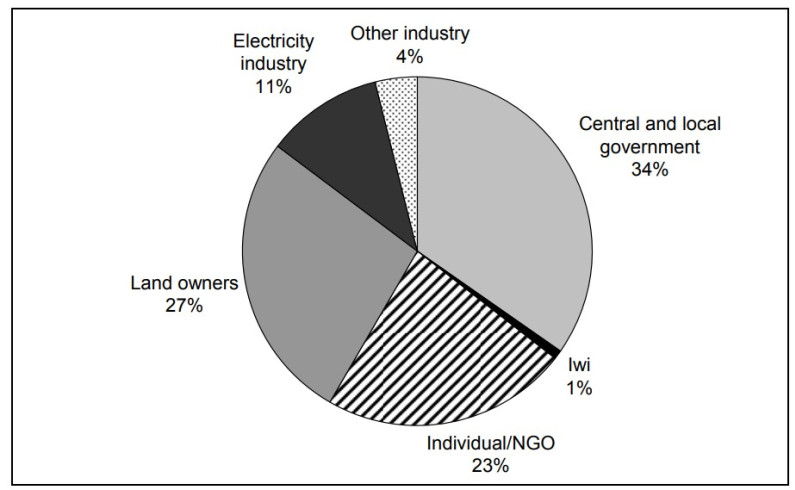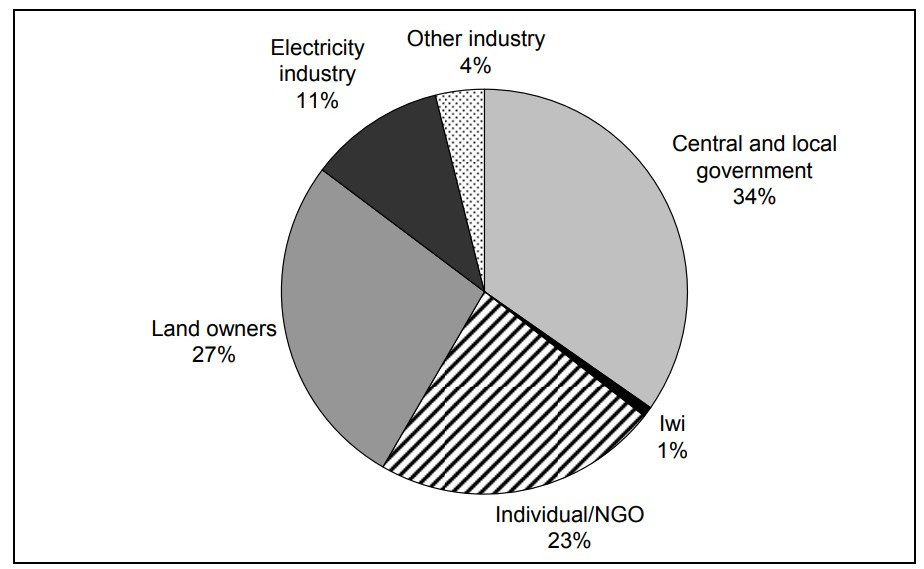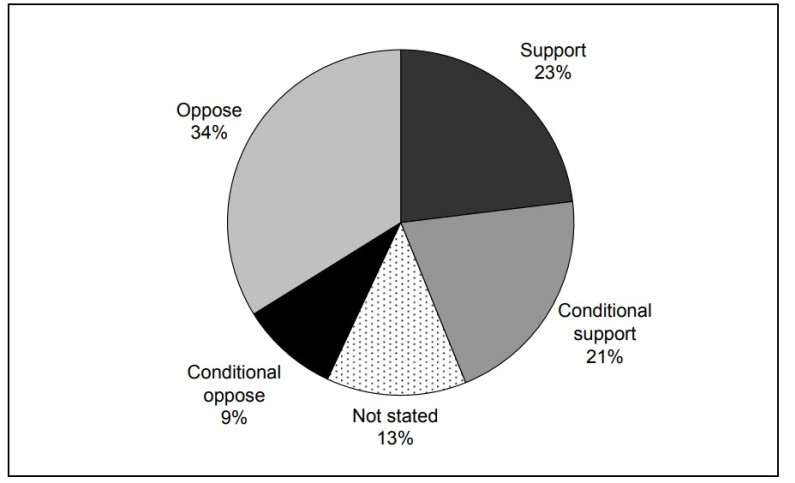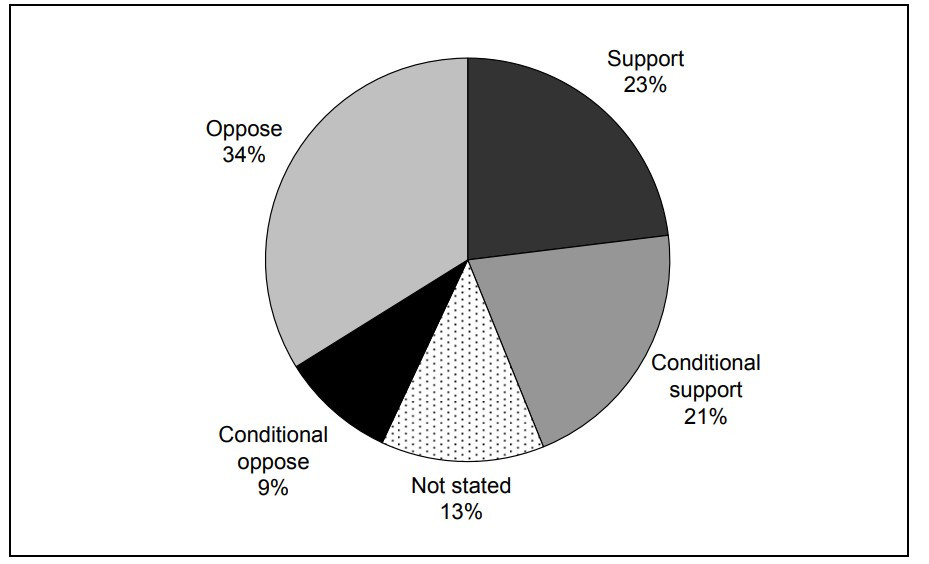4.1 Introduction
What are national environmental standards?
National environmental standards are legally enforceable regulations made under sections 43 and 44 of the RMA. Standards can be numerical limits, narrative statements or methodologies that are in a legally enforceable form. These may include standards relating to the use and subdivision of land, the discharge of contaminants, or noise. Standards cannot contain guidance material, although an informative user’s guide could be produced to assist users of the NES. A standard cannot indicate whether a resource consent should be notified, or who should be considered an affected party.
The NES for Transmission Activities would:
- apply to the operation, maintenance and upgrade of the electricity transmission network (transmission activities) but not to the construction of new lines
- specify that transmission activities that do not have significant adverse effects are permitted provided that specified terms and conditions to control environmental effects are complied with (listed by the type of activity associated with the particular effect)
- specify consent categories for activities that do not meet the permitted activity terms and conditions.
As shown in Table 2 (section 3.2.6), the NES satisfies the selection criteria. In particular it will:
- minimise the cost to councils of implementing the NPS by providing a set of rules that take immediate effect without going through the plan change process
- provide a nationally consistent framework of consent requirements for transmission activities
- provide for the effective operation, maintenance and upgrading of the network by making a range of transmission activities permitted
- take account of operational requirements and technical constraints in determining the level of control on transmission activities
- manage the environmental effects of transmission by setting terms and conditions on permitted activities
- minimise RMA processing costs and delays by setting out a detailed rule framework for transmission activities and reducing the complexity of consent processing
- be effective within the timeframes specified in the NPS.
4.1.1 Consultation
In October 2007 a discussion document setting out proposals for NES for electricity transmission was released for public comment. During the submission period four public workshops were held in Auckland, Hamilton, Christchurch and Wellington. In addition, the Ministry for the Environment’s Talk Environment Roadshow travelled throughout New Zealand between 17 October and 2 November 2007. The Ministry visited 17 centres and facilitated 31 meetings with local government and the public. The meetings were attended by approximately 1500 people, to whom a fact sheet was made available, which included information about consultation on the proposed NES. The submission period closed on 30 November 2007.
Responses from submitters were used to refine the proposals for NES for Transmission Activities and will be used in preparing guidance on implementation of the standards. A summary of submissions was published in April 2008. Eighty-four submissions were received on the discussion document. The following figures (Figure 2 and Figure 3) contain a breakdown of submissions. There was a good rate of response from local government, particularly from regional councils. Eleven of the submissions were from submissions from urban land owners and developers.

Thirty-five per cent of submissions were received from central and local government (territorial authorities, regional councils and unitary authorities). Twenty-seven per cent of submissions were received from landowners. Individual submitters and non-governmental organisations (NGOs) provided 23 per cent of submissions. Eleven per cent of submissions were received from the electricity industry, four from other industry and one from iwi authorities.

Thirty-five per cent of submissions were received from central and local government (territorial authorities, regional councils and unitary authorities). Twenty-seven per cent of submissions were received from landowners. Individual submitters and non-governmental organisations (NGOs) provided 23 per cent of submissions. Eleven per cent of submissions were received from the electricity industry, four from other industry and one from iwi authorities.

This chart illustrates that for the proposed transmission activities national environmental standard:
- 23% of submitters supported the proposed standard
- 21 % expressed conditional support
- 13% did not state their point of view
- 9% conditionally opposed and
- 35% opposed the proposed standard
The breakdown of submissions by position on the proposed transmission activities NES shows that 44 per cent of submitters supported the proposals, either as proposed or subject to specific changes being made. Thirty-five per cent of submitters opposed the NES, and a further 9 per cent opposed the NES but their objections would be met by making specific changes.
The comments related to modifying the standards rather than removing them, except for those from land owners who opposed the standards on the basis that the permitted activity standards would allow Transpower greater freedom of access to private land (which they will not). Ten submitters made very detailed comments on the 42 separate regulations proposed in the discussion document. These comments were taken into account in further drafting of the NES.

This chart illustrates that for the proposed transmission activities national environmental standard:
- 23% of submitters supported the proposed standard
- 21 % expressed conditional support
- 13% did not state their point of view
- 9% conditionally opposed and
- 35% opposed the proposed standard
The breakdown of submissions by position on the proposed transmission activities NES shows that 44 per cent of submitters supported the proposals, either as proposed or subject to specific changes being made. Thirty-five per cent of submitters opposed the NES, and a further 9 per cent opposed the NES but their objections would be met by making specific changes.
The comments related to modifying the standards rather than removing them, except for those from land owners who opposed the standards on the basis that the permitted activity standards would allow Transpower greater freedom of access to private land (which they will not). Ten submitters made very detailed comments on the 42 separate regulations proposed in the discussion document. These comments were taken into account in further drafting of the NES.
The proposed NES for Transmission Activities sets out a framework of resource consent requirements for transmission activities. The requirements range from permitted activities (subject to terms and conditions to control the effects) to full discretionary activities. The proposed NES would cover the operation, maintenance and upgrading of the existing national electricity transmission network, but would not apply to construction, maintenance or upgrading of new lines, or to substations.
4.2.1 Objective
The objective of the NES for Transmission Activities is to give effect to a number of policies in the NPS in the most efficient, consistent, effective and cost-effective manner. This section examines whether an NES is the most appropriate objective in terms of the purpose of the RMA.
The proposed NES for Transmission Activities is designed to give effect to the following aspects of the objective of the NPS:
- recognises the national significance of the electricity transmission network
- facilitates the operation, maintenance and upgrade of the existing transmission network
- meets the needs of present and future generations while managing the adverse environmental effects of the network.
The remaining parts of the NPS (not set out above) relate to establishing new transmission lines and managing the adverse effects of other activities on the network. These are beyond the scope of this NES.
4.2.2 Permitted activities
The proposed NES would specify that all transmission activities are permitted provided they meet terms and conditions to ensure there are no significant adverse effects. The types of activities to be permitted are:
- maintenance and upgrading of conductors (wires) up to duplex (two conductors of the same phase in a double configuration) and increasing the current or voltage − these activities will be subject to conditions on conductor size and will need to meet International Commission on Non-Ionising Radiation Protection guidelines on electric field strengths and magnetic flux density (the ICNIRP guidelines)
- maintenance and upgrading of support structures (towers and poles) and temporary line deviations subject to conditions limiting height increases (to 15 per cent as a one-off), relocation distance, and proximity to occupied buildings
- removal of transmission lines, subject to conditions on restoring the land
- cleaning and painting transmission support structures, subject to conditions on the materials used and prevention of air, land and water pollution
- signs and telecommunications antennae dishes on support structures, subject to conditions on size
- earthworks, and trimming and removal of vegetation that is not in sensitive areas, subject to conditions on erosion control, site restoration and disposal of debris
- construction noise, subject to compliance with standards for noise and vibration
- minor discharges and minor activities over water and the coastal marine area, subject to conditions on receiving water quality.
4.2.3 Controlled activities
Certain transmission activities are to be specified in the NES as “controlled” activities. The controlled activities are:
- maintenance and upgrading of transmission line supports, including cleaning and painting
- temporary line deviation and temporary structures
- vegetation trimming and removal, and earthworks (except on public conservation land)
- noise, vibration and discharges to water
- placing existing transmission lines underground.
4.2.4 Restricted discretionary activities
The following transmission activities are to be specified as “restricted discretionary” activities:
- adding conductors above duplex configuration, and adding new circuits and telecommunications facilities
- upgrading support structures (including height increase and relocation above the permitted or controlled limits), removal of lines and permanent deviation of lines, and changes to a heritage transmission tower
- cleaning support structures
- earthworks and vegetation removal in sensitive areas.
4.2.5 Discretionary activities
New access tracks requiring removal of vegetation in special areas, or any activity that fails the permitted activity terms and conditions and is not specifically listed under any of the other types of resource consents, would be discretionary.
4.2.6 Non-complying activities
Any transmission activity that breaches the international standard for electric and magnetic fields (EMF) will be non-complying. This means that the consent authority may only grant resource consent if it is satisfied that the adverse effects will be minor (other than effects on persons who have given their written consent), or the activity will not be contrary to the objectives and policies of any relevant plan or proposed plan.
Appendix 1 presents a table summarising proposed NES activities and their status.
4.3 Consultation process
4.3.1 Submissions received
Key issues raised by submitters on the specific proposals included:
- the presumption that transmission activities require resource consent unless specifically identified as permitted activities (which might result in those activities being classified as discretionary by default)
- whether councils have the ability to implement the regulations, due to the high level of detail and complexity of the proposed standards
- the proposed standards not taking enough account of the sensitivity of the environment the transmission activities will occur in
- lack of clear limits for electric and magnetic fields
- the potential for the proposed standards to prevail over future designations, which would cause problems for councils and Transpower, because resource consents may be required as well as designation, doubling the workload associated with an upgrade.
4.3.2 Response to submissions
The issues raised by submitters were complex and took time to resolve. To address the issues and make sure the regulations are workable, the proposed NES has been revised, in consultation with local authorities, to get the detail right and to ensure effective implementation of the NPS. As a part of the revision process the Ministry undertook an assessment of relevant regional and district plan provisions to ensure that, overall, no additional consent requirements are created.
The Ministry for the Environment’s detailed response to key issues raised in submissions is summarised in Table A2 in Appendix 2.
See more on...
4. Proposed National Environmental Standards for Electricity Transmission Activities
December 2009
© Ministry for the Environment